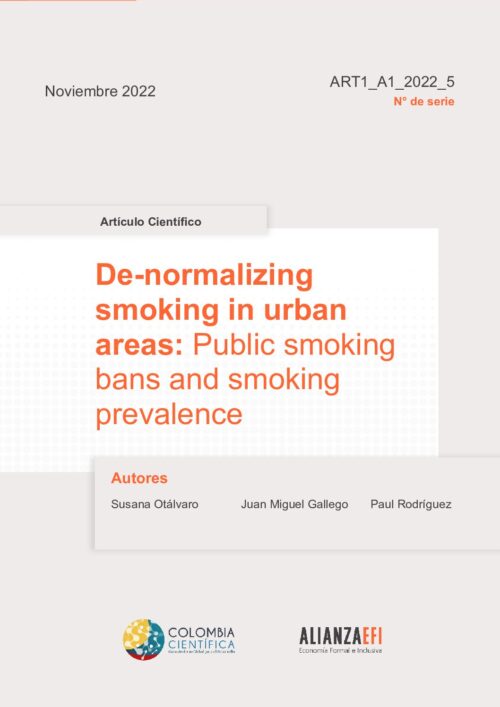The effectiveness of command-and-control policies related to tobacco use has been studied in high-income countries. Still, there is limited evidence of their effects in low and middle-income countries. We explore the case of Colombia, a country that introduced a business-supported smoking ban in bars and restaurants and all public indoor spaces in 2010. This paper investigates the effect of smoking bans in bars and restaurants on smoking prevalence in Bogotá, Colombia. In this paper, we use the matching with triple-differences technique in analyzing household consumption data from the 2007 and 2011 quality of life surveys. This is done by exploiting their geographical proximity and variation in the density of commercial areas. We found that after the smoking ban implementation, smoking prevalence reduced in households near high-density commercial blocks compared to households near low-density commercial blocks (−10.8 pp.). The impact is larger for households with children and older household heads. Since households near high-density commercial blocks are more frequently exposed to smoking than households near low-density commercial blocks, the former would be more willing to internalize the smoking de-normalization process.
Autores:
- Juan Miguel Gallego
- Paul Rodríguez
- Susana Otálvaro
Palabras clave:
- Cigarette Consumption
- Density
- Proximity
- Public Smoking Bans
- Smoke-Free Laws
- Temptation Goods
Categorías:
- Proyecto 1
- Publicación
